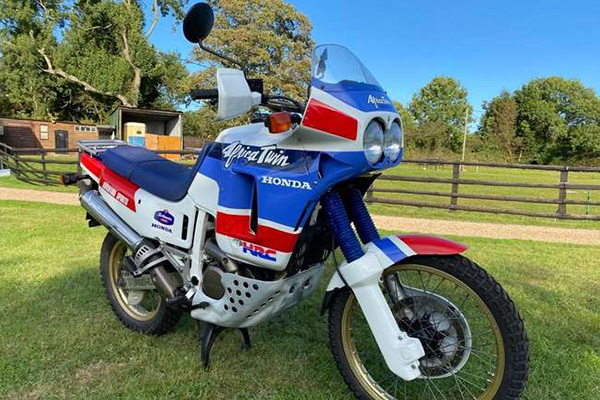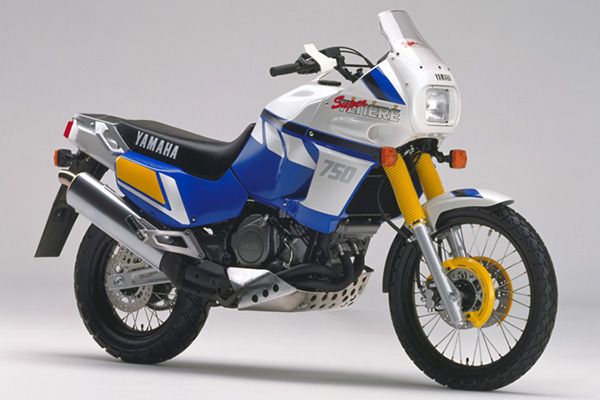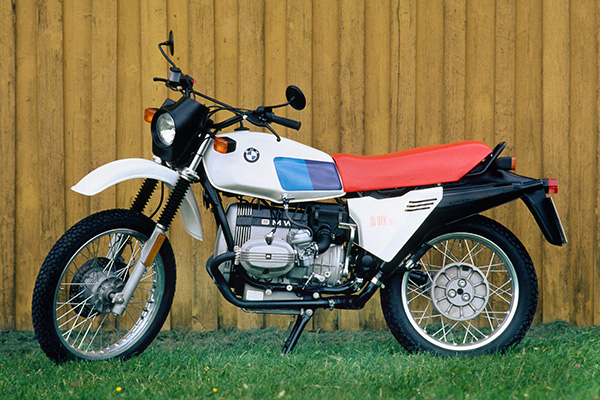Classic adventure bikes: going to the ends of the earth on a basic tool kit
What could be more fun than riding your classic to the caff on a sunny summer Sunday? Well, how about riding it to southern Spain, maybe Sweden, Senegal or South Africa.
It's probably not prudent selecting a 1920s classic from your collection for such a trip - although dafter adventures have been conducted - but there's a vast array of classics that are more than capable to taking you to the ends of the earth.
Some are tough enough to reliably deliver you non-stop, while others are relatively simple enough to be roadside-fixable with a basic tool kit if older generation gremlins show themselves.
Older classic adventure bikes were born of the necessity for manufacturers to produce unstoppable bomb-proof continent-crossing race machines which either spawned customer versions or were the basis for homologated competition motorcycles.
In a sudden sea of similar-concept machines a few have made legendary status: the BMW GS, Honda Africa Twin and Yamaha Super Tenere - bikes that the truly knowledgeable and super-adventurous would trust with their lives, sometimes literally.
Honda's Africa Twin roots lie in competitive niggle after arch rival Yamaha and then German big bike firm BMW between them won the first three Paris-Dakar "Raid" races following the 1979 inaugural, with BMW - after a solitary Honda privateer win - hitting on a formula that saw them dominate through till 1985.

Come 1986, Honda's competitive DNA - "Honda spends, Honda wins" was a company competition department mantra - saw the uncrating of the sledgehammer-to-crack-a-nut NXR750 V-twin. It proved unstoppable for the next three years.
It was just a matter of time before Honda introduced a production version. The original 1988 Africa Twin was a 650, and it didn't just look the part. Two years later Honda upped the ante to 750cc, which with a series of subtle but effective upgrades and developments saw it through to 2001. More than 73,000 were built.
It's now not just a collectable classic, but a machine sought out by adventure riders as an authentic continent crosser.
A year later, in 1989, Yamaha hit back with their XTZ750 Super Tenere. Named after a super-tough stage of the Paris-Dakar, it lasted in the Yamaha range until 1996. It too became a multiple Paris-Dakar winner.

Like the Africa Twin, the Super Tenere was a "clean sheet" design.
The 10-valve parallel twin motor kicked out 70bhp, and the bike looked the part. But looking and doing are two different things. If the Super Tenere had convincing looks, it also had thoroughly convincing capability, something that those of us who knew what they were doing recognised.
One out-of-step feature was its big 21-inch front wheel - straight out of the trials and moto-x design book, and meant to help it traverse obstacles without digging in and bringing it to a halt. There was a sight concern that such a big front wheel would affect on-road handling, but Yamaha's chassis and suspension design meant that its off-road capability was matched by its on-road manners.
It's another machine, which, while rare, will be at its best seeing the world rather than the world just looking at it on display at a show or in a museum.
Classic BMW GS adventure bikes polarise opinion. When they first appeared they looked and felt comparatively huge, with enormous flat twin engines and consequently substantial statures.
It all started back in 1978 when engineers designed and built an 800cc flat twin prototype primarily aimed at "enduro" competition - basically long-distances combining trials, motocross and road riding. It looked like a big motocross bike with lights.
The thing was it had been put together without an official development order from BMW management. After an awkward initial introduction of the prototype to that same management they almost immediately gave it the green light: in 1980 the BMW (almost) go anywhere R 80 G/S (Gelände/Straße or Terrain/Street) was launched.

It stayed in the BMW range until 1987 when it was replaced by the R100 GS, said to be the most powerful and fastest "enduro". It was before the commonplace use of the phrase "adventure bike", but the DNA of current BMW GSs can clearly be linked with what is now one of THE classic adventure bikes.
Admittedly more suited to on-road than off-road, they could still obliterate most natural obstacles during their production life through to 1996. They evolved into the R 1100 GS and then R 1150 GS through to 2003, after which the R 1200 GS - and the digital era - arrived.
That each of these three legendary machines are still sought after as both collectables and use-ables says a great deal about how right the initial designs were, the common factor being they're not much less capable of going just about anywhere - reliably - today than today's adventure bikes.
Written by Iain Macauley, Automotive Journalist

COMMENT